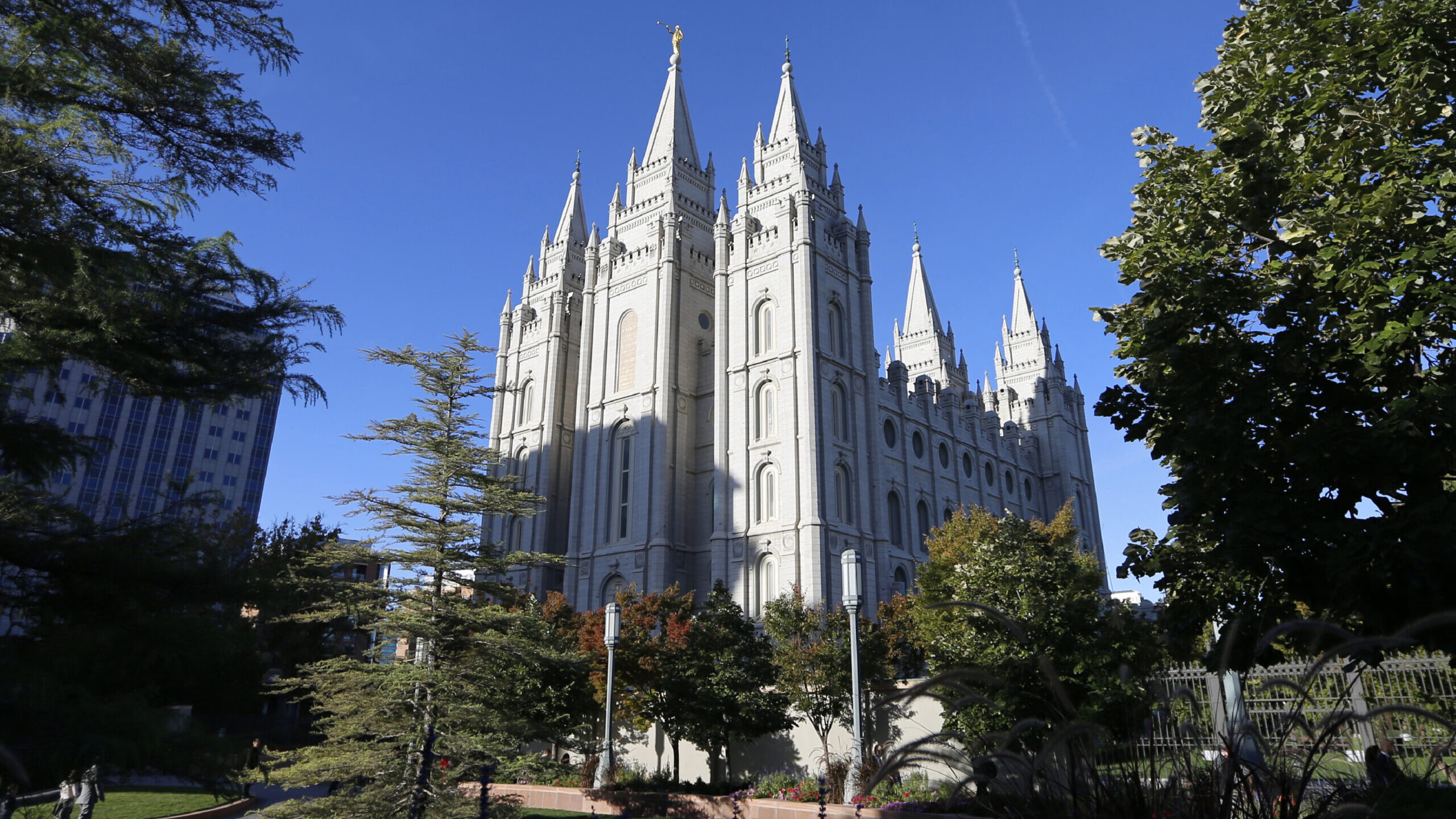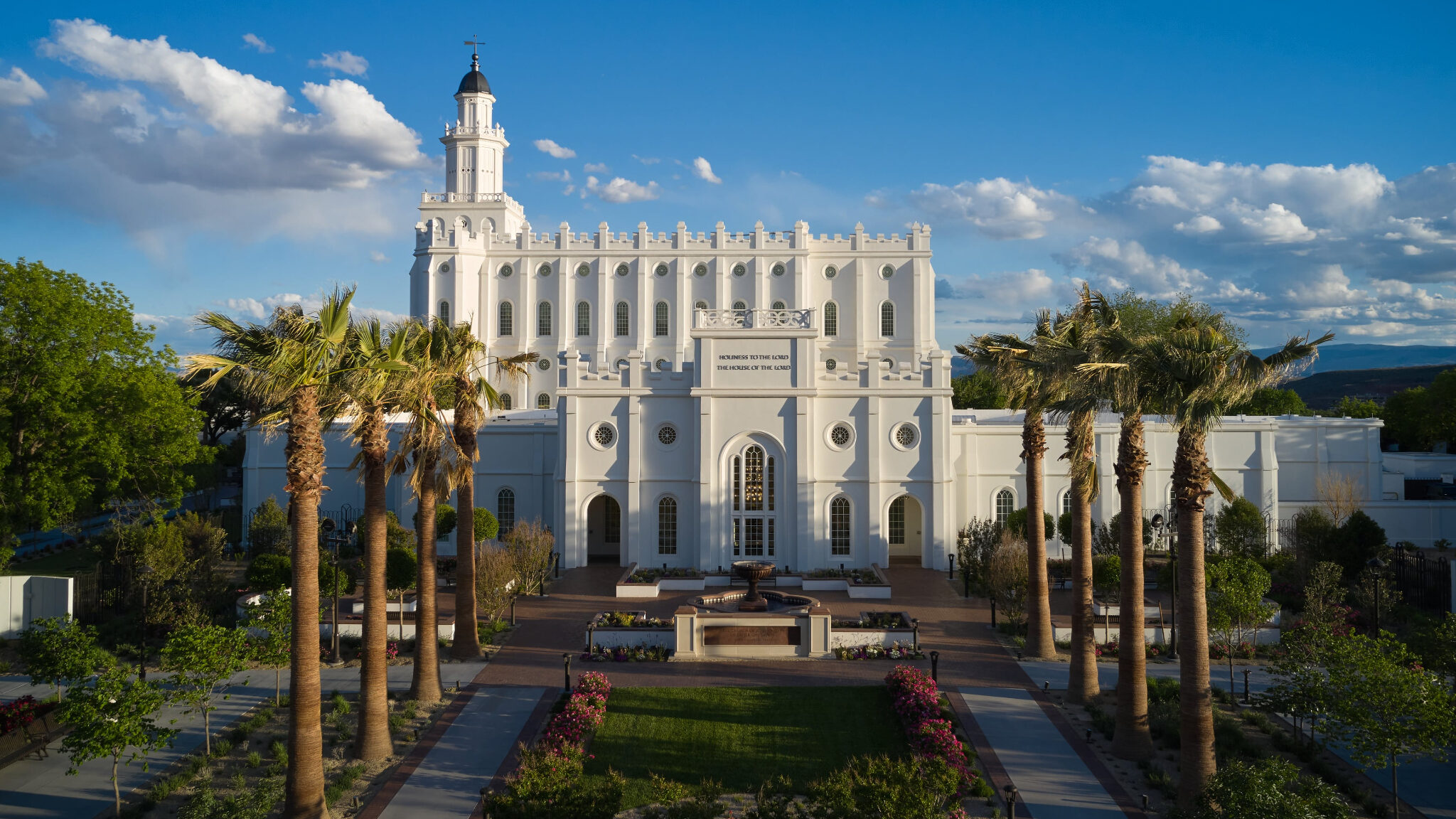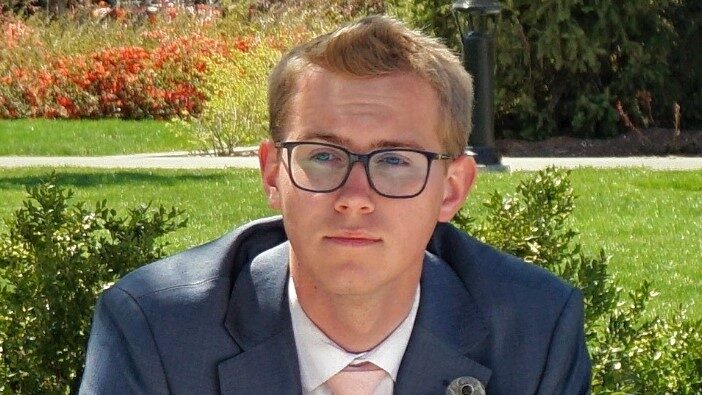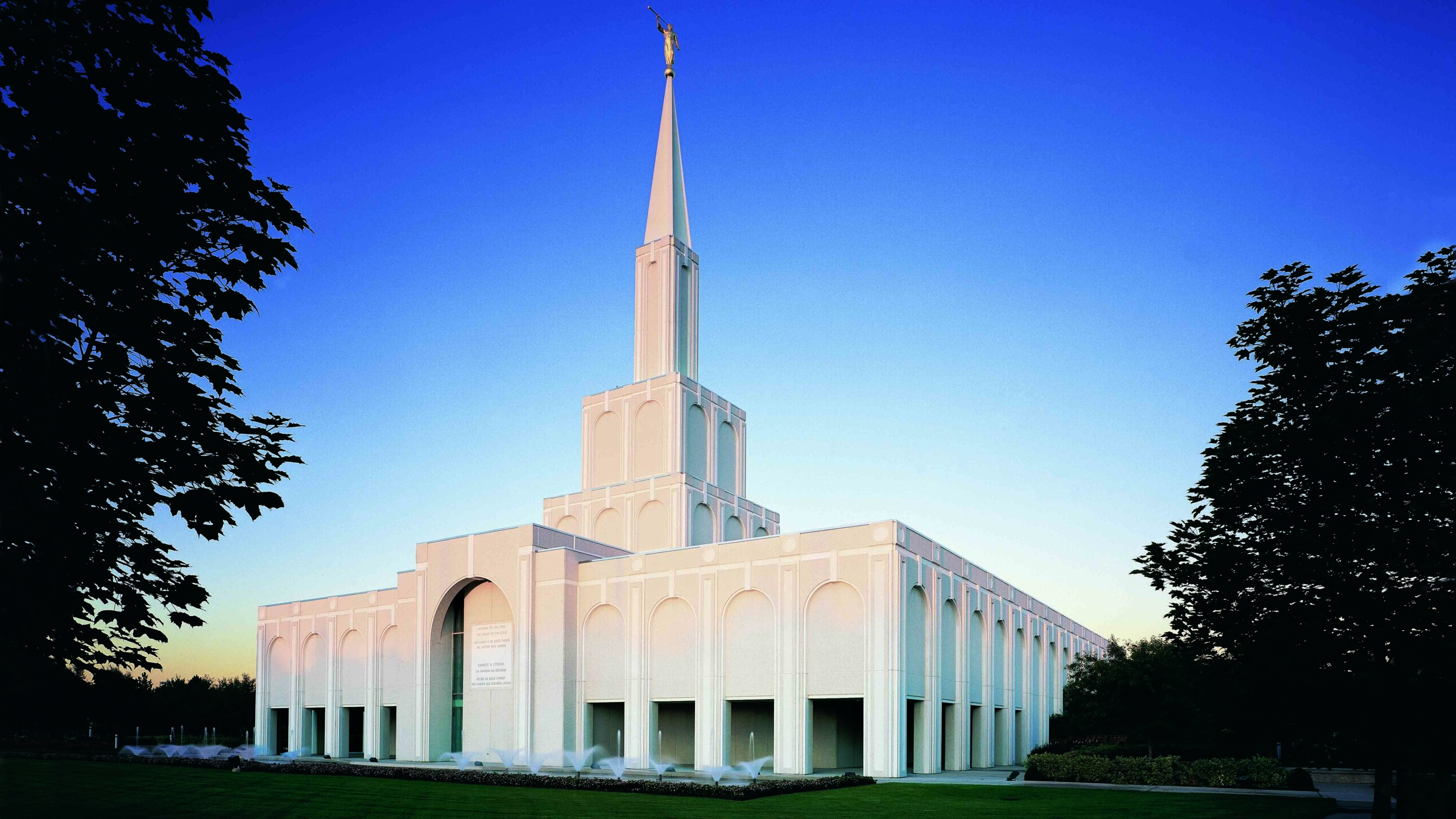RACE, RELIGION + SOCIAL JUSTICE
The sad history of Tragedy Spring
Oct 1, 2022, 12:45 PM | Updated: Jan 22, 2023, 6:57 pm

Firefighter Fred Woods assesses damages at Tragedy Springs (Jonathan Pierce Calfire)
(Jonathan Pierce Calfire)
SALT LAKE CITY — Three members of the Mormon Battalion are buried at Tragedy Spring, a once peaceful spot high in the Sierras. Marked a historic site, it has been visited by many who remember the Battalion and its impact on the history of California and The Church of Jesus Christ of Latter-day Saints.
In recent years, Tragedy Spring has fallen victim to sad events — a windstorm in 2020 that brought down large trees at the site, and the Caldor fire which burned through the area in 2021. Whether it can be restored to its former beauty is an open question.
The history of Tragedy Spring and the Mormon Battalion
Daniel Browett, Ezrah H. Allen and Henderson Cox. These three men were murdered after a conflict at what is now known as Tragedy Spring. When their bodies were found by fellow Battalion members days later, a memorial was carved into a tree and the site was given its name. The group then left to pioneer a new wagon road across the Sierras.
The story of Tragedy Spring involves much more than the three men who died there. It’s part of the history of the California gold rush and of Latter-day saints who were in California even before the arrival of Brigham Young’s advance company of pioneers in the Great Basin.
The Mormon Battalion was a unit of the U.S. Army that was recruited from the refugee communities of Latter-day Saints in Iowa in July of 1846. These were people who had been forced to leave their homes in Illinois. Many of them were living in desperate poverty.
Brigham Young, without the knowledge of most of the other church leaders, assigned a man named Jesse Liddell to go to Washington and attempt to get an audience with President James Polk. Young wanted to see if Polk was willing to assist the Saints in the move west.
As the United States was engaged in the Mexican American War, Polk gave approval shortly after receiving that communication with Jesse Liddell, to recruit a 500-member battalion comprised of Mormons of Latter-Day Saints.
Almost immediately, they left for Fort Leavenworth, Kansas, and began their trek through Santa Fe and Tucson. They made their way across the desert to the Pacific Ocean. A substantial number of Battalion members, some who were sick, as well as women and children, went instead to Pueblo in what is now Colorado. Their adventures are a whole story in itself.
For the rest of the battalion, the march took about six months, though they had enlisted for a year. They were tasked with building up the military presence in San Diego, along with Fort Moore in what was then a small settlement called Los Angeles.
When their enlistments were up, many chose to leave. About 80 members though, signed up for another six months of duty. And after that, they went north to the area around Sacramento. Some found employment with John Sutter at his sawmill along the American River. In January 1848, gold was discovered in the river, setting off the momentous gold rush to California.
Some of the battalion members were able to gather some gold dust of their own by panning in the river. But the call of home and family was strong. And by June, a company had been assembled to travel to the valley of the Great Salt Lake.
The tragic deaths at Tragedy Spring
In June of 1848, a company of Latter-Day Saints — most of them veterans of the Mormon battalion — were pioneering a route through the Sierra Nevada south of Lake Tahoe. A scouting party of three men, Daniel Browett, Ezra H. Allen, and Henderson Cox had gone ahead of the main group.
They didn’t return, and the rest of the company discovered their bodies in a shallow grave a few days later. The memorial carved into a tree at the site listed the names and said they were supposed to have been murdered by Native Americans on the night of June 27. In truth, though, we don’t know the details of who killed them or why.
Frank Tortorich, a volunteer historian, said about the memorial:
“The word ‘suppose’ bothered me a lot. The word ‘murdered’ bothered me a lot. Because I didn’t understand what ‘suppose’ meant. Was it supposed that Indians killed him? Was it supposed at night?” Tortorich said. “‘Suppose’ was just a curious word that was thrown in there and I never ever thought the word ‘murder’ was appropriate. Because these were Washoe Indians. They were not warrior Indians. And they actually had interchanges with the Mormon Battalion members in Pleasant Valley and helped them build the road.”
Tortorich suggests there may have been some contact with the Washoe at the site that turned into a fight. But that’s also speculation. What we do know is that the main company found a leather pouch that contained about $120 worth of gold dust that had belonged to one of the men, Ezra H. Allen.
After paying respects at the burial site of the three men, the company continued on and pioneered a new route through the Sierras. Up to this point, the best-known route through the mountains to California was along the Truckee River. This route was difficult and dangerous and required crossing the river about two dozen times. With many wagons, animals and people, the group found it in their best interest to find a new route.
“They did not have a desire to create a wagon road that would bring people West. Their only desire was to get their 45 men, one woman, 17 wagons, and 300 animals to the Salt Lake Valley. However, they proved that wagons could travel over this route, which would become known as the Carson River route. When they got out onto the, what is now the Nevada desert, they met a mountain man by the name of James Clyman. He had 18 wagons and he was intending to come to California by the Truckee River.” Tortorich said.
“Well, they showed him the gold and the map and he came this way. A week later, it was Pierre Barlow Cornwall with 25 wagons. So we know that in 1840, at least 120 wagons, 400-500 people, and 1000-1500 animals traveled over the Carson River route.” Tortorich said. “The word got out about gold discovery, and the Carson River route, and the 49ers then started using the Carson River route rather than the Truckee River route.”
Recent developments at Tragedy Spring and what is being done
2021 was the year of catastrophe for the Tragedy Spring site. In March, a huge windstorm blew through the mountains. It brought down several large trees, including one that stood right next to the stone cairn marking the graves of Daniel Browett, Ezra H. Allen, and Henderson Cox.
Peter Guilbert, a service missionary with the California Living History Mission of the Church of Jesus Christ of Latter-Day Saints, along with other volunteers, tried to mitigate some of the damage after the windstorm. Though, without the help of heavy machinery, they were not able to lift the fallen trees or do much more than shore up the stone wall next to the graves.
Then came the fire. The mountains of northern California, like much of the West, have seen unprecedented droughts in recent years, something scientists say is a result of global climate change. The dry conditions have left the forest vulnerable and multiple wildfires have burned across the state.
On August 14, 2021, two men were target shooting near an old logging town called Caldor. They started a fire that spread rapidly over 200,000 acres in the Eldorado National Forests, south of Lake Tahoe. The fire damaged and destroyed more than 1000 structures and forests. More than 20,000 people were forced to evacuate. A huge plume of smoke was visible from space as it drifted across the country. The Caldor fire burned for weeks, eventually reaching Tragedy Spring in September.
A cistern just a few yards from the spring was covered with an aluminum roof. But the wooden framework that held it up was burned in the fire. It still sits precariously on its concrete foundation, just a short distance from the monument.
The Tragedy Spring road, a short detour off highway 88, apparently marked the southern extent of the Caldor fire. Along the nearby road that’s now called the Mormon Emigrant Trail, huge piles of burned logs wait to be trucked away. What hasn’t fallen or been cut down will stand until nature replaces the blackened forest and mile after mile of the mountain landscape that was once traversed by a company of Latter-day Saints trying to find their way home.
Dogs trained to detect human remains were recently taken to the site to see if the burial location was accurate. The dogs did not alert to any remains at the spot marked as the burial place of the three Battalion. members. But Charles Hutchinson, an archaeologist and the Heritage Program Manager for the Eldorado National Forest, says the dogs did find a spot nearby where human remains may have been buried.
Restoring the site, Hutchinson says, will take money, and in the future there may be some grant money available to help. He says the Forest Service would be happy to work with groups like the Oregon California Trails Association and, of course, volunteers from the Church of Jesus Christ of Latter-Day Saints. Hutchinson says telling the story in the future should also include the Native American groups who lived in the area at time. “It would be great to join with the Washoe and the two other groups to re-create the signage and maybe make it a little more accurate.”
Peter Guilbert and some friends were at the site again in recent days, cutting more logs and clearing the trail. They’re planning to get back up there and plant new trees before he’s covered by snow, which happens early at 8000 feet. His hope is that they can restore a sense of peace and serenity, even in the aftermath of the wind storms and fire.
What happened to the families of the Tragedy Spring victims? How can they be honored?
Today, Tragedy Spring is a burned-out wreck. While it’s still accessible to visitors, all they’ll see is hundreds of blackened trees, many of them fallen over. There have been efforts to cut through those that posed a hazard to the site. But, the character of the place, which had been a focus for reverence and reflection on the service and sacrifices made by early Latter-Day Saints in California, seems forever changed.
The monument to the three Mormon Battalion veterans who died there in 1848 is still visible. Daniel Browett, Ezrah H. Allen, and Henderson Cox had stayed in California after the battalion was mustered out of military service, preparing to return to their families. Even after the discovery of gold at Sutter’s Mill.
Ezra Allen had acquired some gold in the months that followed the find that set off the California gold rush. It’s likely the two other men had some too but only the pouch that belonged to Allen was discovered when other men from the company crossing the Sierras found their bodies. The company blazed a new road across the Sierras that became one of the major routes for California-bound wagon trains during the Gold Rush and beyond. Members of the company went to the Salt Lake Valley to meet the saints that had settled there even before the place was called Utah.
Some continued on across the plains to Council Bluffs, returning to families there. Sarah Allen, Ezra Allen’s wife, was one of those who’d been waiting anxiously for two years since her husband had gone with the army. Years later, she told the story of how she learned of her husband’s death.
“. . . word was brought to me that some of the brethren had arrived home and that my husband and two other of the brethren had been killed by Indians in the California mountains. I learned that a purse containing a hundred-twenty dollars in gold dust had been found, belonging to my husband, and it was being brought to me.
“Thus, when my hopes and expectations were blasted in a moment, what could I do but trust in God? I had no relative in the church, two small children and a journey of a thousand miles before me. For some time, I felt I would sink under my burden of grief and anguish of heart. Then I aroused myself and I began to meditate on what course to pursue, how to provide for my family and prepare for the journey. I therefore determined to make every effort to accomplish this desirable undertaking and leave the events in the hand of God.”
In 1851, Sarah traded her gold dust for a wagon, an ox team, and provisions for the journey west, but kept enough of the gold to have a ring made. She wore it for the rest of her life. She made the trek to Utah in 1852. Eventually, she married again and had six more children. She settled in Logan, where she died in 1891.
Elizabeth Browett came to Utah with one of the earlier pioneer companies in 1847. The only child she had with Daniel Browett had died at Winter Quarters. Elizabeth learned of her husband’s death when members of his company arrived in the valley in 1848. She was married for a time to another battalion member, but she did not have any more children. She died in 1899.
After they arrived in the Salt Lake Valley, Henderson Cox’s family settled in the area that became known as Fort Union. Jehu Cox moved on to help found the town of Fairview. Elias Cox, Henderson’s younger brother, became the first bishop of Huntington when that town was settled. Today, the Cox family has hundreds of descendants, myself among them.
As they embarked on their journey, Brigham Young and other church leaders told the battalion that their names would be “held in honorable remembrance to all generations.” If there were to be any lasting tragedy associated with Tragedy Spring, it would be that Ezra Allen, Daniel Brown and Henderson Cox might be forgotten, along with the place where they died.
Angel Peatross and Chandler Holt contributed to this report.
Bonneville International Corporation, the company that owns KSL NewsRadio, is a subsidiary of Deseret Management Corporation, which is owned by The Church of Jesus Christ of Latter-day Saints.
Listen to the full special here:













